Abstract
PTFE-faced thrust bearings are already well established in various parts of the world and gaining rapid ground as an alternative to the more conventional babbitt-lined bearings for major hydrogenerator installations.
Michell Bearings has been developing PTFE-faced thrust bearings for a number of years with most early applications being found in refit projects to overcome performance limitations in existing equipment. At an early stage in the development process Michell Bearings formed a strategic relationship with Fuji Electric (now Voith Fuji Hydro Power Generation) in Japan for the joint development of PTFE-faced bearings for cost-effective incorporation in new build Fuji machines.
This paper gives a brief background to the development of the PTFE-faced thrust bearing and their successful application in a range of new hydrogenerator programmes. The design of the pad and the design duties are described along with operational experience where this is relevant. In preparing this paper the authors have sought to provide an integrated perspective on PTFE-faced thrust bearings as seen from the bearing supplier and from the machinery manufacturer alike.
Introduction
For many years whitemetal or Babbitt has been used as the principal, working face lining material for hydrodynamic, oil lubricated bearings. Indeed the use of babbitt pre-dates the invention of the tilting pad bearing at the beginning of the last century and was, for example the material used on the bearing faces of the vast multi-collar, plain bearing thrust blocks characteristic of naval vessels before the 1920’s. Of course, the development of fully hydrodynamic bearings means, in theory, that any dimensionally stable and sufficiently strong material can be used for the load carrying surfaces of a bearing, which are separated by a fluid film. Babbitt has remained popular, however, because of its low break-out friction, its ability to tolerate embedded debris and the ease with which it can be repaired or replaced should this become necessary. Nevertheless a number of different materials have been experimented with over the years and it is polytetraflouroethylene (PTFE) that is making significant inroads particularly for demanding hydrogenerator installations.
Michell Bearings has been developing PTFE-faced thrust bearings since 1996 (1 ), starting with relatively small scale laboratory tests and progressing to full scale testing on a purpose built rig, followed by a number of full size, field applications (2). At an early stage in this process Michell Bearings formed a strategic relationship with Fuji Electric (later Voith Fuji Hydro Power Generation) in Japan for the joint development of these bearings for incorporation in Fuji machines. It is significant that whereas a number of the early PTFE-faced bearing applications encountered by Michell were for retro-fitting to existing facilities, typically to counteract some operational limitations (3), the relationship with Fuji was based around bearing applications in new machines.
The initial decision by Fuji Electric and Michell to work together on the development of the PTFE-based bearings required a clear commitment on both sides with transparency of data and information through the product introduction cycle. Fuji Electric have an additional long-term interest in the use of PTFE-faced bearings in association with their own advanced bearing design using magnetic uplift. In this case there is a need for a back-up bearing to endure severe, but occasional duties, in the case of power failure (black shutdown). The tolerant nature of PTFE appears to be ideally suited for this duty. In addition the high pressures possible allow smaller thrust pads to be used. This has the additional benefit of reducing energy loss, thereby increasing machine efficiency.
The relationship between Fuji and Michell, as machinery manufacturer and bearing supplier respectively, has matured to the point that there is now a significant portfolio of new Fuji hydrogenerator installations that make use of Michell PTFE-faced thrust bearings. The end users are all power authorities in the Japanese hydro power community. At the time of writing the project list is as shown in Table1.
ACCESS FULL
PAPER
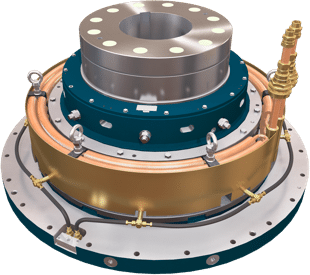 Vertical Bearings
Vertical Bearings
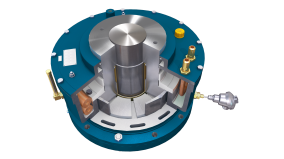



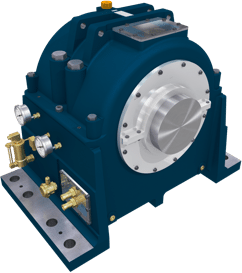 Horizontal Bearings
Horizontal Bearings
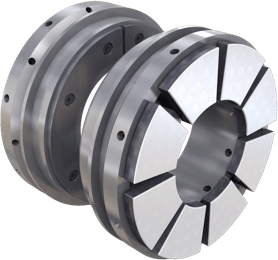 Tilting Pad Bearings
Tilting Pad Bearings
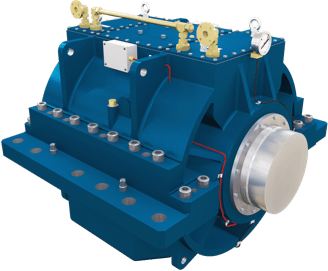 Marine Bearings
Marine Bearings
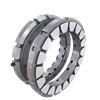


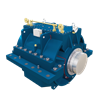
 PTFE Bearings
PTFE Bearings PEEK Bearings
PEEK Bearings


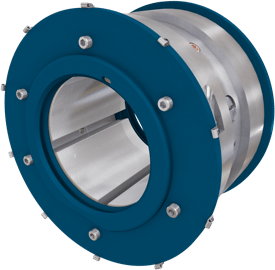 Journal Bearings
Journal Bearings
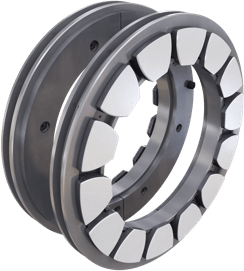 Thrust Bearings
Thrust Bearings

